(Original title: Baidu first opened a car in Silicon Valley test drive: before the car must first sign an excuse with Baidu)
News Reporter Bao Yuyu
Baidu's R&D center in Sunnyvale, California, was unveiled just two months ago. This is Baidu’s third R&D center in the United States and the second office of the Chinese tech giant in Silicon Valley. Unlike the first two R&D centers, the main direction of this center is the most competitive auto-driving R&D in the current AI field.
On January 5th, local time, Silicon Valley was raining and rainy. Baidu's R&D center in Sunnyvale opened for the first time to the media. For the first time, it invited the outside world to take a self-driving car equipped with Baidu's Apollo 2.0 system to participate in the road test. .
It is reported that Baidu Apollo2.0 system will be officially released on January 9 this year, the international consumer electronics exhibitors.
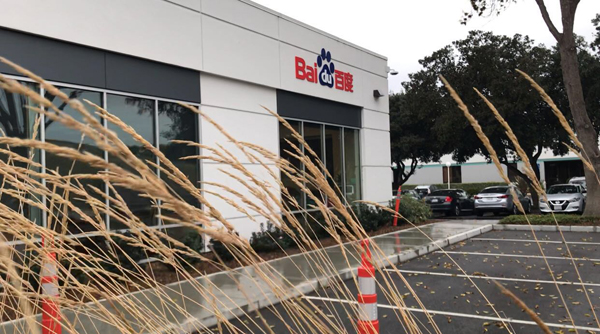
Baidu is located in the R&D center in Silicon Valley
L4 level: "unmanned" is better than "manned"
"This is the first time we have invited outsiders to participate in the L4 road test. It is an experience for you. For us, you are the mouse. We must share your feelings with us after a while." An engineer at the Baidu US Research Center joked before picking up a journalist on the train.
It is understood that in the future L4-level autonomous vehicles will be mainly used for automatic driving on simple urban roads.
An engineer pointed out to Yu Xin’s reporter that the so-called simple urban roads refer to the urban roads where the road conditions are relatively simple and there are few emergencies. “For example, here in Silicon Valley, this kind of two-way lanes use isolation belts. Separated, only the road to the same direction can be considered a simple city road."
According to the definition of the International Society of Automotive Engineers, vehicle automation is divided into six levels of L0-L5. The larger the number, the higher the degree of automation and intelligence. L4 belongs to the "high degree of automatic driving" under specific scenes. Except for some special situations, human intervention is generally not required; L3 level means that the vehicle can implement advanced follow-up driving functions such as auto follow-up, road correction, automatic parking, and adaptive cruise. .
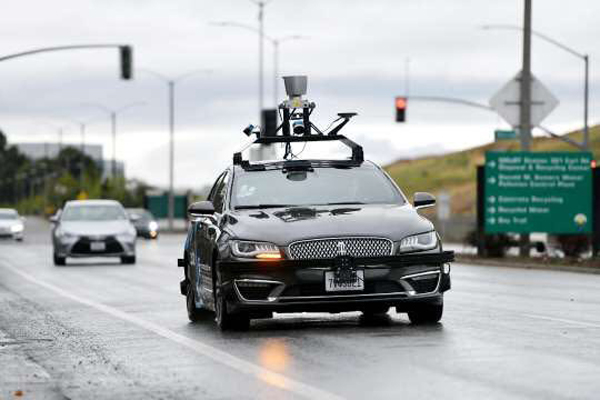
Self-driving car loaded with Apollo 2.0
澎湃 News reporters are riding a Lincoln MK L4 smart car. During a test road that is about 2 kilometers in length, the vehicle automatically completes turns, lane changes, identification lights, auto follow-up, and vehicle evasive actions.
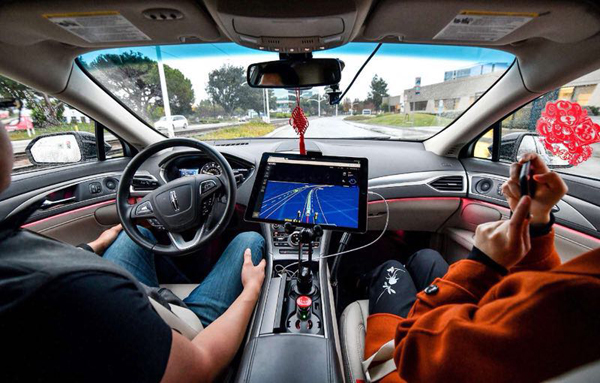
Self-driving car facilities
On the electronic frequency screen next to the driver's seat, you can see that the car's "brain" is based on road conditions and the environment content detected by the detector is also displayed in real time - yellow boxes represent pedestrians, green represents other vehicles, etc. Wait.
The Lincoln MK sedan can be described as highly authentic on autopilot hardware: a 64-line laser radar is mounted directly above the roof, two 16-line laser radars on each side of the roof, and a near-distant two camera A millimeter-wave sensor is installed under the bumper in front of the car to more accurately identify the road and obstacles in the front of the vehicle. The brains of the entire vehicle - two computers with super computing power - are placed in the trunk, one computer is responsible for the central control, and the other is responsible for visual recognition.
It is understood that the accuracy of this set of sensing systems not only helps vehicles to see the pedestrians, vehicles, and infrastructure on the road, but also sets the size of cats and dogs to identify and respond.
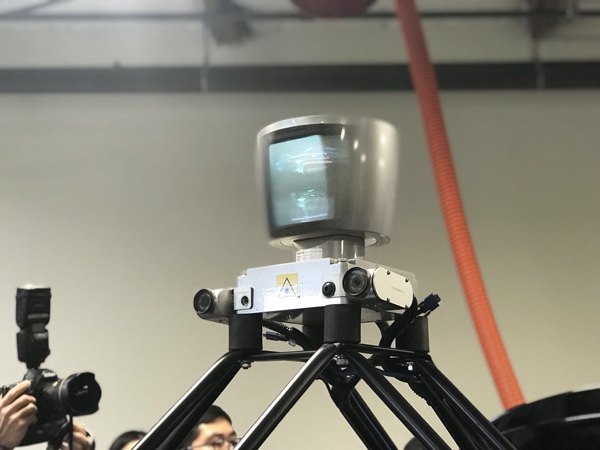
64-line laser radar
It is understood that the current market price of a 64-line laser radar on the roof of the light vehicle will reach 80,000 US dollars. During the testing process, the accompanying staff on the car told Xinhua News that with the development of future production technology, the cost of various types of high-precision components will continue to decrease, and at the same time, the technology companies will come up with more reasonable and feasible solutions to speed up the process of automation. The commercialization of driving landed.
Previously, the Yu Xin news reporter has repeatedly tried Baidu's different types of self-driving cars. In terms of riding experience, L4 self-driving cars are more fluent when they perform instructions such as braking, acceleration and deceleration, avoiding obstacles, and steering, and driving habits are closer to humans. At the Asian Consumer Electronics Show held in Shanghai last summer, the self-driving car riding on the Xinshi News reporter was a bit stiff in terms of parking and acceleration, giving people a sudden stop and a sudden acceleration.
An engineer at the Baidu US Research Center told Xinhua News that this optimization comes from the improvement of the sensor's accuracy and the improvement of the algorithm, allowing the vehicle to observe and predict road conditions faster; at the same time, the vehicle's deep learning The ability to continuously imitate and learn humans' driving habits makes "unmanned" better than "manned."
The engineer explained that the faster the vehicle speed is, the higher the computational power and sensing accuracy of the vehicle are. Baidu’s L4 self-driving car has achieved good test performance at a speed of 90 kilometers per hour or even faster.
L3 level: application scenarios on shared cars
Since the launch of the Apollo open platform last year, Baidu has attracted more than 7,000 developers. More than 1,700 collaborators have downloaded Apollo's open source code, and more than 100 partners are applying for open data.
The shared car company Panasonic is also one of the partners currently joining the Apollo platform. In the afternoon of the same day, the Panda car also demonstrated the automatic delivery and automatic parking of shared cars that combined Baidu L3 level autopilot.
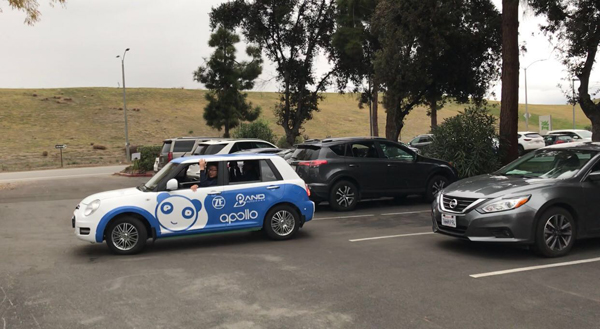
Demonstration of automatic parking
“We think that when people use shared cars in the future, they should not spend time on finding cars and parking. The cars come to you. This is the right way to open a shared car,†said a presenter of the Pending car. Hey news reporter.
Then, the staff member opened the mobile phone APP and clicked on "I want to use the car." A shared car in the parking lot in the distance was slowly driven out of the driver's seat and stopped in front of the presenter. "After the car is used up, the driver can get off the car and then click 'I want to return the car'. The car will go to the parking lot and stop." The staff explained.
During the demonstration, suddenly a cyclist rushed into the car and the vehicle slowed down until the bike passed. In addition, when the analog signal lights appear in front of the vehicle, the vehicle can accurately achieve the "red light stop, green light line."
Participate in the test needs to sign the "exclusion book"
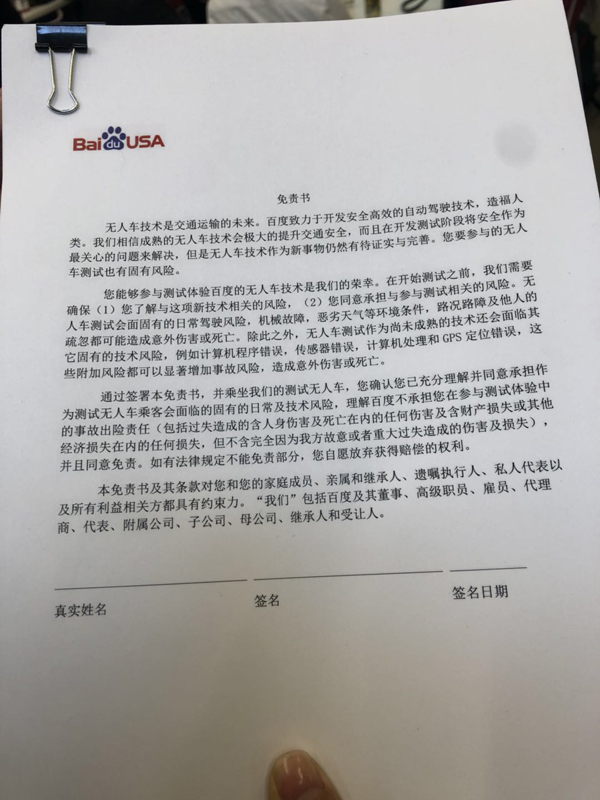
Disclaimer
Interestingly, all those who participated in the test and experience received an excuse from Baidu before boarding.
The scribbled essay reads, “As a new thing, unmanned vehicle technology still needs to be confirmed and perfected. The unmanned vehicle test to be involved also has inherent risks. Before starting the test, we need to ensure that the test experience personnel understand the risks associated with this new technology. And agreed to assume the risks associated with participating in the test."
The stipulations indicate that the unmanned vehicle test will face environmental conditions such as inherent daily driving risks, mechanical failures and inclement weather, and the road condition and other people’s negligence may cause accidental injury or death. In addition, as an immature technology, unmanned vehicle testing will also face other inherent technical risks, such as computer program errors, sensor errors, computer processing and GPS positioning errors. These additional risks can significantly increase the risk of accidents.
According to Baidu's staff, the signing of such a document is based on the provisions of local laws in the United States.
Automatic Driving Silicon Valley Track
Prior to the test ride, Baidu America Research Center also recruited public volunteers on Twitter. Eventually, a junior major in mechanical engineering from the University of California at Berkeley was selected as the first general public to experience the test ride.
On the afternoon of January 5th, he came to the scene early and waited for an hour before he got into the car. After the test ride, the college student said with excitement, "Baidu should be more confident with its own technology, and it is better for the experiencer to sit in the main driving position."
California was the first region in the world to allow unmanned cars to be tested on the road. As early as 2015, it had opened a real road test for agencies applying for road test licenses, and also issued a special management bill.
Previously, the local government stipulated that driverless cars must be equipped with a tester to be ready to take over the vehicle at any time, and the vehicle must have a steering wheel and brakes installed. However, in September 2016, the governor of California signed a new bill, canceling the requirement to have drivers in the same vehicle, which means that the “unmanned†test can be carried out in the local area.
It is precisely because of the liberalization of policies that major auto-piloting companies in the world have gathered to start the competition. Especially in Silicon Valley where technology companies get together, it is not a difficult task to encounter a “unmanned vehicle†on the road that is undergoing road tests.
As of December 28, 2017, 49 companies have obtained the license for self-driving road tests in California, and Chinese companies have occupied 8 seats. Among them, there are large-scale technology companies such as Baidu; there are also traditional automotive companies - SAIC, Changan Automobile; start-up technology companies - Pony.ai, Jing Chi Technology, Roadstar.ai; and representatives of domestic new car manufacturers - Weilai Motors, and Jia Yueting's FF (Faraday Future) is currently on the air of public opinion.
“Automatic driving is a very popular field, and it is not impossible for China to implement automatic driving.†Wang Jingao, the senior director of Baidu America Research Center, told Xinhua News that the first Chinese government is very supportive of the technology. At the same time, Chinese car companies are also willing to use this opportunity to achieve curve overtaking and truly master the world’s leading auto-pilot technology. China is still the largest car market. â€
Air Vane Motor,Air Motor Vanes,Pneumatic Vane Motor,Flange Mount Air Motor
RUDONG HONGXIN MACHINERY CO.,LTD , https://www.rdhxmfr.com